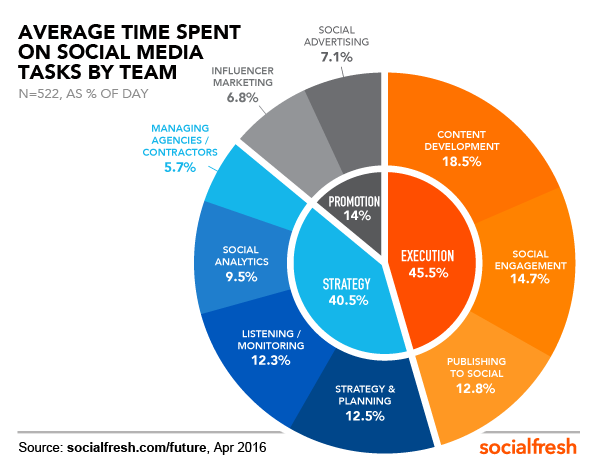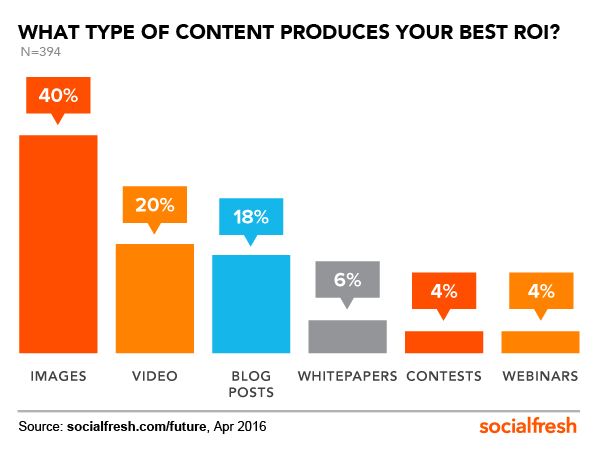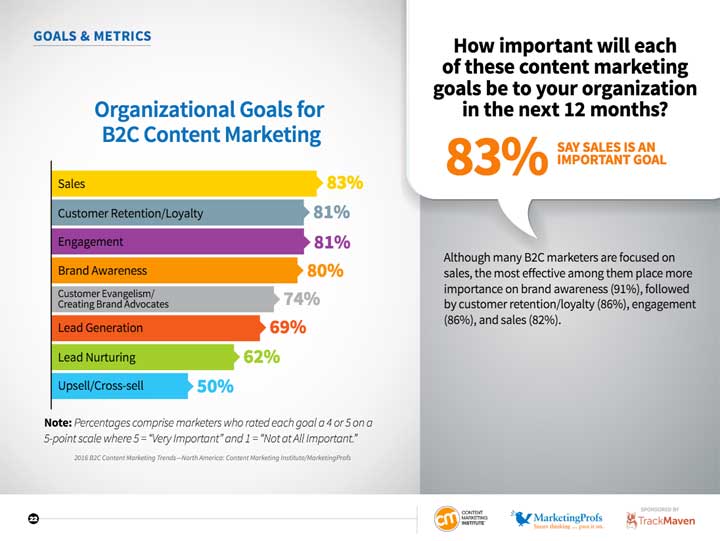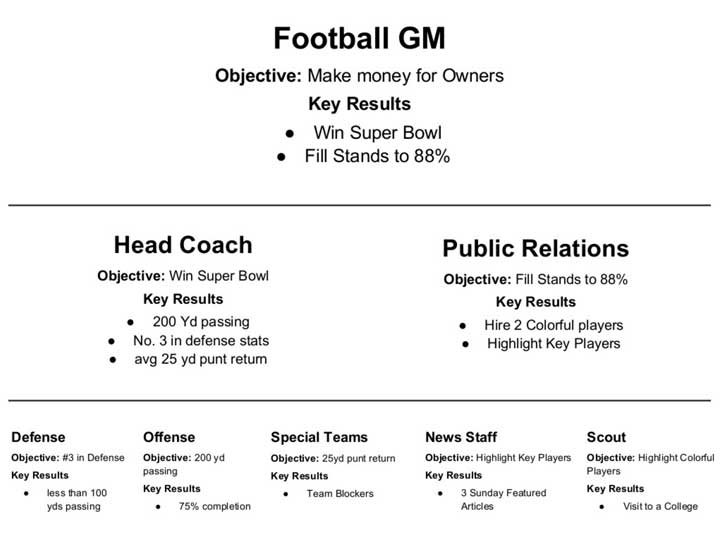How aligning goals and creating a strong culture of feedback between social and content teams can create a marketing powerhouse in your organization
The relationship between content and social
In The Future of Social, a research report by Social Fresh, social marketing teams spent 18.5% of their time on content development. That 18.5% was the most they spent on any task in the survey, with social engagement coming in 2nd at 14.7%.
The fact that social media teams are spending more time on content development than on social engagement may be a bit surprising. But Jason Keath, CEO of Social Fresh says, “Content is to marketing as oxygen is to life. One does not exist without the other. Great marketing does not exist without solid content. However, you CAN have successful digital marketing without social engagement (though I don’t recommend it).”
Social teams realize that engagement alone isn’t enough of a contribution to the overall marketing mix, and thus use content in a plethora of mediums to enhance and engage people into the brand experience.
This strong link between social and content isn’t new. The Content Marketing Institute’s Content Marketing Benchmarks, Budgets, and Trends-North America 2016 report showed that 93% of organizations use social media content in their content marketing efforts as well. This cements the idea that both disciplines rely on each other for success, and in small organizations are often handled by the same people. Without content, social teams would be hard pressed to find a means to build trust and credibility with their audience. Without social, content would be missing one of its most important feedback and promotion channels.
“We have reached content saturation with people consuming 11 hours of content each day. Businesses understand that they have to create better content in order to stand out, to compete with Netflix and Buzzfeed and Red Bull,” says Keath. “We’ve taken the pressure of the Super Bowl spot and made a micro-version of it every day on every social network. It takes a new set of skills to compete in that landscape.”
In this new competitive landscape, the relationship between social media and content marketing would imply that the goals for both should complement each other well. However, the data suggests that when it comes to the goals for content and social teams, it’s a mixed bag.
Social and content goals are not always aligned
What defines “success” for these disciplines? In The Future of Social report, 76% of respondents said that awareness was one of their top two social media goals, followed by lead generation at 47%.
Content marketing goals vary by organization type. For B2B, organizational goals for content marketing are lead generation, sales, lead nurturing and brand awareness.
For B2C organizations, sales, customer loyalty, and engagement rank at the top.
Organizational goals for social media and content marketing seem to be slightly different, but not entirely disparate. Social puts brand awareness far above other goals, but brand awareness ranks 4th for content marketing, and as a percentage is still a relatively important goal. What seems to be different is the importance of each goal to the individual teams.
“If you ask a marketer to weight all their goals, I’m psyched to see sales and lead gen come out on top. We asked marketers to list their top two social media goals and uncovered something very telling, that awareness was in the top two for most social marketers,” says Keath. “This is a reflection of cheap metrics like followers, likes, comments being so visible in social media (largely awareness metrics). The metrics are there so many social media teams get judged on them.“
The result of having similar goals with variances in importance has the potential to create conflict between content and social teams.
Similar goals with variances in importance can create conflict between content and social teams. Click To TweetThe effect of misalignment
Without aligned goals, in both metrics and importance, many issues arise between content and social teams. As Shonali Burke, of Shonali Burke Consulting says, “The misalignment of social media and content marketing goals will probably result in a lot of resentment and friction, and become really hard to achieve those goals. Because the teams aren’t working together, they’ll basically be working against each other.”
Burke lists four main causes for conflict between social and content teams:
- Not having goals clearly identified.
- Not understanding who’s responsible for what.
- Thinking one piece is “less important” than the other (which tends to be much more about personal egos than anything else).
- Being strapped for time and resources, which naturally makes them give more emphasis to what they perceive is “more important.”
These disagreements over not only having poorly defined goals, but the importance of each goal, and who is responsible, are issues we see in companies large and small. While social teams may report success in their own metrics that they deem as important (such as awareness), content marketing teams can be seen as lagging because their more important goals are more closely aligned to leads and sales, which are harder needles to move and potentially measure than awareness.
As Burke said, these misalignments can put social and content teams at odds with each other.
Misalignment of goals can put social and content teams at odds with each other. Click To TweetDisagreements on larger strategies could result. Social teams may be hesitant to promote owned content that may come across as too “salesy” or to help nurture leads down a sales funnel because it may come across to heavy-handed, thus reducing engagement rates. Content teams may be reluctant to create highly clickable articles because they would lack the depth to get an audience to convert to a lead. Neither team sees the other’s goals and wants to make them succeed because they see it as potentially inhibiting their ability to reach their own goals.
Have you experienced your own social and content teams digging in their heels?
Overcoming a lack of alignment on goals and importance
The first step is to look at the goals of the organization and understand how marketing’s overall goals cascade down into content marketing and social teams. Both teams need to deliver on the overall marketing goals, and when aligned properly, they will have a much greater chance at achieving them.
If your organization uses OKRs or OGSM, then you have this process already in place and it is a matter of reassessing the existing objectives for both teams and deciding which objectives should become aligned, and which will remain independent to each team.
However, if you do not have a cascading goal model within your organization, you can implement one for your social and content teams to align them. The high-level idea of OKRs is simple and summed up well in this football analogy from Jayme Hoffman.
Objectives are your goals, and key results are what you are looking to complete to get to your goals. Key results from one level become the Objectives for the goals for the level beneath it. This transparent means of goal setting goes from the CEO down to the individual contributor.
The result of using cascading goals is that each team and individual will have a better understanding of how their effort impacts the overall goal for the company. “If we remember that we are all parts of a whole, then we have joint ownership, and can take joint responsibility in achieving that goal,” says Burke.
Next, create a new set of shared goals for the social and content teams. These will vary based on the goals for the organization and marketing department, but ensure that these shared goals are actionable for both teams, i.e., no shared goals for increasing the number of Twitter followers because content teams don’t have direct control over such a metric.
“If the objectives are mutual – and they SHOULD be – then it becomes a matter of mapping out what the path is to achieve those mutual objectives, and who is best positioned to help move things along at various points,” says Burke.
These shared goals should be outcome oriented, and not output oriented. (Creating x pieces of content or sharing x number of articles are output goals. Generating x number of leads and increasing traffic to your website are outcome oriented goals.)
Examples of shared goals attributed back to content and social teams:
- Increase lead volume to x
- Increase lead volume by y%
- Increase unique views to website by y%
- Convert x number of sales
- Drive x dollars in revenue over a certain timeframe
All of these goals can be achieved by content and social teams working together, but would be very hard to attain without each other’s support.
Once the new goals are identified, create a culture of continuous feedback between the teams. Regularly check in, daily or weekly, to get feedback on how things are progressing toward the aligned goals, upcoming pieces of content, promotion strategies, opportunities for future content, etc. You can use an agile content marketing framework for these meetings.
The teams will also notice that they are still very different, despite having common goals, so neither is losing their identity in the process. According to Keath, “In reality, digital marketing succeeds with a sale or a lead. It succeeds when social media teams focus on their customers or biggest fans. That’s what social media is best at.”
Benefits
Content teams need to see social as more than just a promotional outlet. Two-way dialogue needs to be created to gain feedback from social teams on what topics are resonating with audiences and how those audiences’ needs are changing. Social teams know an organization’s target audience better than any other department because they interact with them every single day. In conjunction with data-driven content marketing metrics, use this information to adjust your content strategy and tactics. New content ideas will come from these conversations and help the content team create incredibly useful content that fulfills an actual audience need.
Content teams often have a breadth of expertise that social teams can tap for engaging social content, such as Q&A’s, position as an influencer on social channels, video interviews, podcasts, etc.
Moving forward together
Creating a mutually beneficial relationship between social and content teams improves the ability for both teams to reach an organization’s goals. Without this synergy, both teams are left battling on their own, or at worst battling each other, to achieve goals that may not be in the best interest for themselves or the business.
Burke says, “Much of this really has to be solved at the managerial level, so that a clear roadmap is laid out for teams. When that is done, and they work together, the results can be really beautiful.”
Further reading and training:
The Future of Social is a two part report. The stats report is free for download at https://training.socialfresh.com/fos16. The more in-depth version of the report (over 70 pages of data and analysis) is available at https://training.socialfresh.com/order-form which includes a deeper dive into the analysis by social media experts Jay Baer, Omar Akhtar, Sue Funke, Jason Eng and more.
The Content Marketing Institute’s Content Marketing Benchmarks, Budgets, and Trends-North America 2016 report is available for free download.







